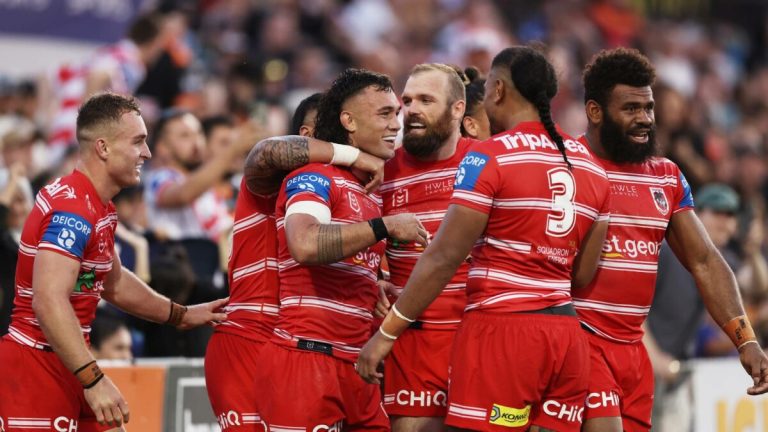Tell me how much of the credit growth are you anticipating in the BFSI segment this quarter.
Nitin Aggarwal: So, yes, credit growth has been ranging between 9.5% to 10% in that range and our estimate for the year is around 11.5 and we think that the growth will likely be back ended and led by recovery in retail and some demand coming back in corporate because right now with the bond market rates going down faster, there is some demand substitution that has happened. So, we believe that with some pick up in the consumption activity, benefits from the reduced income tax rates and the borrowing cost which has come down, there will be some pickup in the demand in the second half. So, which is where we think the full year growth will likely recover to 11.5 for the year.
But of late, we have seen some of these mid-sized private banks, case in point being RBL, Bandhan Bank, they are picking up. Well, of course, they had their own reasons why the stock prices were also lower. But anything that is looking good to you with respect to these particular banks or the mid-sized private banks when they are coming off their lows, how do you see the fundamentals actually shaping up?
Nitin Aggarwal: So, there has been yes, good activity in the mid-sized private names. Some of them have run up very well and we also upgraded RBL Bank after the Q4 results. But the runup certainly is way sharper than what one was looking at after Q4 results. But this is essentially driven by the normalcy in earnings which are likely to come through from the second half of the year.
So you see the MFI sector as a whole has been seeing elevated stress and it has been going on for almost a year now and in the coming two quarters the general expectation is that most of this stress will get addressed and from second half you will see normalised levels of credit cost and that will begin to drive an uptick in the profitability.
So, for RBL, for instance, we are expecting ROAs to recover back to 1.1, 1.2 in that range by FY27 and which is why the stock essentially has done pretty well over the last quarter. And Bandhan also is on the same bucket because as the MFI stress subsides, you will see a moderation in credit cost.
They have made a good progress on deposits. The CD ratio has come down pretty sharply and as the credit cost moderates, you will see up trending in their ROAs over the coming years. So, the stock which got pretty beaten down when it went down to the lows has now seen decent recovery from that.
I want to talk about PSU banks also. Given that your report also says that they have witnessed a sharper decline in the outstanding and fresh loans as opposed to what private banks have been doing and showing resilience in fresh loan yields, tell me what trend do you foresee now.
Nitin Aggarwal: So, while going into the quarter our view is that almost every bank will report a double-digit NIM decline from our coverage universe, but the kind of resilience that the private banks are showing in respect to the fresh loans that they are issuing is very commendable because that in fact has resulted in the outstanding loan yield also to improve in May over April, so that is something that points out to that the pressures while they will be there, but over the second half recovery will also be pretty much healthy and to that extent the full year NIMs will see a limited impact on margins and that is something that we are factoring the numbers when we say that this year we are looking at a single digit kind of earnings and next year in 27 we are looking at a 18% kind of earning growth for the sector.
So, the recovery will also be fairly healthy in margins and there is a possibility that you will see some demand-led growth coming back in the unsecured segments because over the last one year we have seen across the board a moderation in PL and the credit card segments and these are the spaces where in private banks generally have been more active than PSUs. So, this trajectory may start to recover from the second half and that will further help banks limit the NIM impact arising from this loan repricing that they are doing right now.
But what about slippages, because many analysts are expecting an increase in slippages this time around for the entire banking space. What could be the reason behind this and how much of a hit could it lead to for the profitability this time around?
Nitin Aggarwal: Slippages, while there could be marginal increase and therefore, even for the credit cost we are building in some bit increase, but it will still be fairly controlled. If you look at the broader lending segments, there is some bit of stress which is still remaining in the unsecured loans.
So, MFI, as I said, is one segment wherein the slippages will remain elevated in the coming one or two more quarters and alongside you are also watchful of personal loans as a segment and that is the reason the slippages while it may be a tad higher but within FY26 we will be more watchful in first half than the second half on the slippages.
The other lending segments be it corporate and SME, they are still going fairly healthy and we are not expecting any major changes or deviations in the slippage trajectory there as such.
So, for the system as a whole credit cost will remain more controlled. For underlying some banks who are more exposed to MFI, you may see elevated levels continuing but for the larger banks credit cost will still be fairly well in control over the year.








